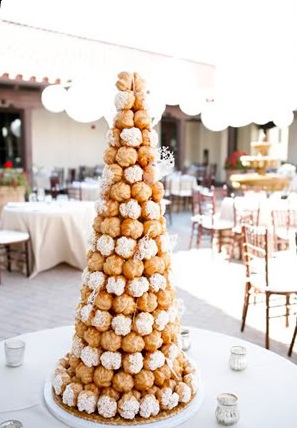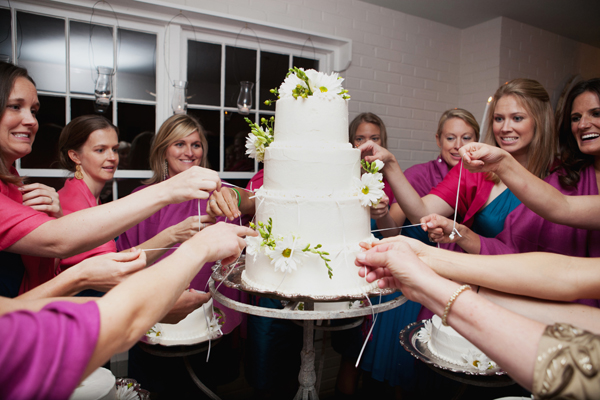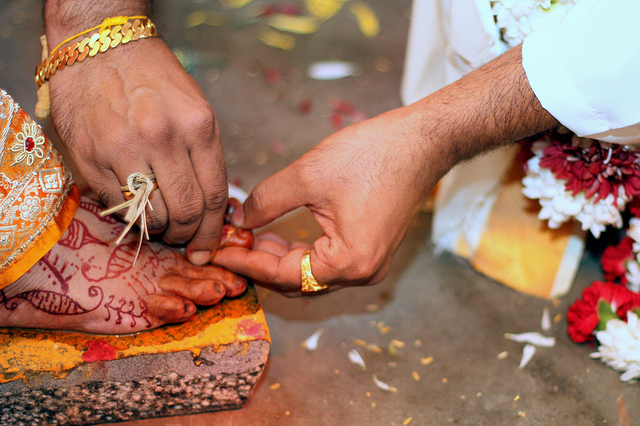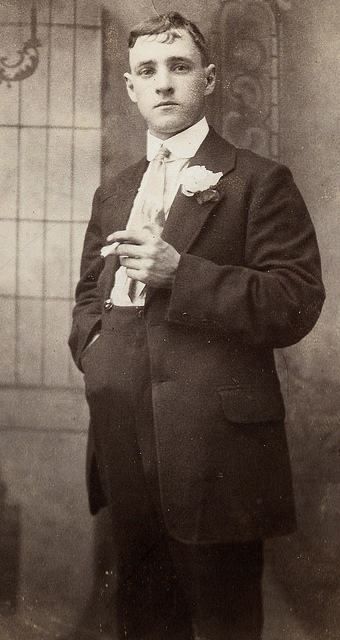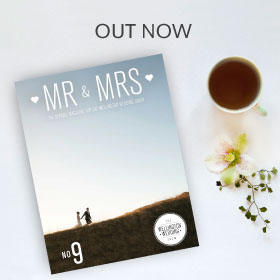Superstitions, customs and beliefs – love visits every corner of the world!
Category: Blogby Johanna Osborne
All the recent love and excitement of the Wellington Wedding Show and Mother’s Day has put us in the mood for more special celebrations… and what could be a better appetiser for romance than looking at how people get married the world over. We think it’s fascinating seeing what others believe will bring luck and joy for their married lives. It’s interesting, it’s varied, it’s weird and it’s wonderful – we guess it truly must be love!
In Peru, single female guests take part in a cute ring tradition. Charms attached to ribbons are tucked between layers of the wedding cake. Before the cake is cut, each woman grabs a ribbon and pulls. At the end of one ribbon is a fake wedding ring- the special prize. The guest who picks that ribbon is said to be next in line for marriage! We think this could work well in our culture too, and what fun it would be!
Russian grooms have to work hard for their brides. Before the wedding, the groom shows up at the bride’s home and asks for his beloved. In jest, her friends and family refuse him until he pays up in gifts, money, jewelry or simple humiliation. Grooms are forced to do silly dances, answer riddles, and perform goofy tests of worthiness like diapering a baby doll. Once the groom impresses friends and family with this bridal ransom, or “vykup nevesty,” he’s allowed to meet his bride-to-be.
In India women born as Mangliks (an astrological combination when Mars and Saturn are both under the 7th house) are thought to be cursed and likely to cause their husband an early death. In order to ward of this curse they must be married first -to a tree! The tree is then destroyed and the curse is broken.
During the Middle Ages in France, wedding guests would bring small cakes and stacked in a pile as high as possible, in the centre of a table. If the bride and groom could kiss over them without knocking them over, it was thought to symbolize a lifetime of prosperity. The traditional French wedding celebration cake, known as croquembouche, was invented by a French chef at the end of 17th century. The cake is made of small, creme-filled pastry puffs piled in a pyramid and covered in a caramel glaze and spun sugar.
In Fiji not only are men expected to ask their father in law for his daughters hand in marriage, they are also expected to bring him a whale tooth. Easier said than done! Besides the black market the only place in the world to get a whale tooth is in the mouth of the largest mammal on earth, which also happens to spend most of its time underwater. Now that’s true love. And amazing that so many Fijians are married!
In Ireland when the bride and groom are dancing the bride’s feet have to stay on the floor. The Irish believe that if they don’t, evil fairies will come and sweep her away. The logic? Evil fairies like beautiful things. The bride is beautiful. The fairies can only get to her if she is not touching the ground. We think this is a rather sweet tradition!
As we all know, beauty is in the eye of the beholder. In the country of Mauritania evidently there is a huge difference between a fat camp and a fat farm. We westerners go to fat camps to lose weight, Mauritanian girls go to fat farms to get fat…and eventually married. The more lush their body shape, the better!
Until modern times, brides carried garlic and dill, a practice which probably originated from the time of the Plague, when people clutched the herbs over their noses and mouths in a desperate effort to survive. Over time, brides added better-smelling flora to the arrangement, hence giving way to the bridal floral bouquet.
The earliest tradition in bridesmaid fashion involved dressing the bridesmaids exactly the same as the bride. As with many older traditions, the idea was that by setting up lookalikes, any troublesome spirits in the area could not fixate on the bride.
Most jewellery exchanged at weddings involves placing rings on fingers, but Hindu brides traditionally wear their wedding rings on their feet. The ring is usually silver and placed on a woman’s left foot, on her great toe (which is next to the big toe). The groom slips the ring on the bride’s foot during the ceremony, and these rings are only worn by married women.
So where does it all come from?
Something Old, Something New, Something Borrowed, Something Blue, and a Sixpence in Your Shoe – “Something old” represents the bride’s link to her family and the past. The bride may choose to wear a piece of family jewellery or her mother or grandmother’s wedding gown. “Something new” represents hope for good fortune and success in the future. The bride often chooses the wedding gown to represent the new item. “Something borrowed” usually comes from a happily married woman and is thought to lend some of her good fortune and joy to the new bride. “Something blue” is a symbol of love, fidelity, and purity of the bride. A sixpence in her shoe is to wish the bride wealth in her future life.
It was the brave knights who gave us the Western European tradition of the groom wearing a buttonhole flower. It was customary for a knight to wear a flower or a colourful handkerchief belonging to their lady fair, when they entered a tournament. The tradition later evolved into the groom wearing a flower from his bride’s wedding bouquet.
It was in Italy, the famed land of love, where gold wedding rings first became popular, and it was also in Italy that the tradition of the wedding cake first began. In the first century BC a cake or bread was broken over the bride’s head to ensure fertility!
Sources: Live Science, How Stuff works, Info Please

